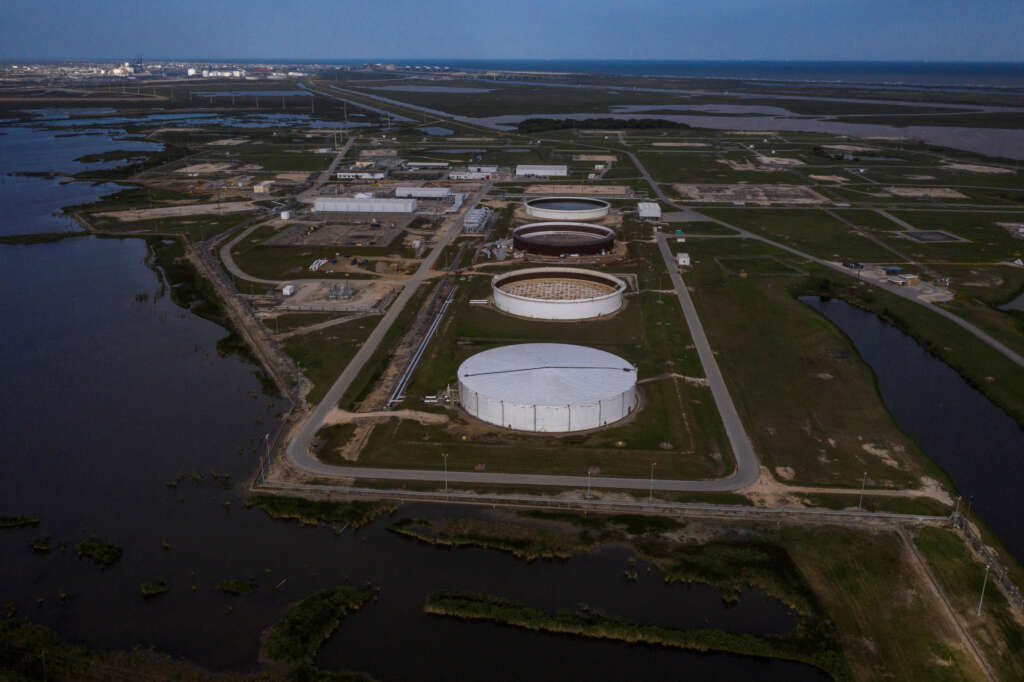
NEW YORK (Reuters) -Oil prices sank about 5% to a five-week low on Tuesday on concerns about the economy as U.S. politicians discuss ways to avoid a debt default and investors prepare for more rate hikes this week.
Brent futures fell $3.99, or 5.0%, to settle at $75.32 a barrel, while West Texas Intermediate crude (WTI) fell $4.00, or 5.3%, to end at $71.66.
That was the lowest close for both benchmarks since March 24 and was also their biggest one-day percentage declines since early January.
Oil prices and Wall Street’s main indexes both fell after U.S. Treasury Secretary Janet Yellen said the government could run out of money within a month.
The White House said President Joe Biden would not negotiate over the debt ceiling during his meeting with four top congressional leaders on May 9, but he will discuss starting “a separate budget process.”
U.S. job openings fell for a third straight month in March and layoffs increased to the highest level in more than two years, suggesting some softening in the labor market that could aid the Federal Reserve’s fight against inflation.
“The U.S. economy continues to evolve in a manner consistent with a recession commencing later this year,” analysts at Barclays, a bank, said in a note.
“The manufacturing sector is contracting, the consumer is struggling, … There are broadening signs of cracks emerging within the labor market,” Barclays said.
Later this week, investors will look for market direction from expected interest rate hikes by central banks still fighting inflation. More hikes could slow economic growth and dent energy demand.
The U.S. Federal Reserve is expected to increase interest rates by another 25 basis points on Wednesday.
The European Central Bank is also expected to raise rates at its regular policy meeting on Thursday.
“The … action of central banks in their mission to tame elevated consumer and producer prices … all cast a rather long shadow of doubt on prospects going forward,” oil broker PVM’s Tamas Varga said.
Concerns about diesel demand in recent months, meanwhile, has pressured U.S. heating oil futures to their lowest level since December 2021.
“Oil basically has weakening prospects from the world’s two largest economies, China and the U.S., and if the macro backdrop deteriorates momentum selling could easily send prices below the $70 level,” said Edward Moya, senior market analyst at data and analytics firm OANDA.
Over the weekend, data from China, the world’s top crude importer, showed manufacturing activity fell unexpectedly in April. That was the first contraction in the manufacturing purchasing managers’ index since December.
IRAN OIL OUTPUT RISING
On the supply side, Iran’s oil production surpassed 3 million barrels per day (bpd), its oil minister said. The OPEC member, which has been under U.S. sanctions since 2018, pumped 2.4 million bpd on average in 2021.
The market shrugged off news that the Organization of the Petroleum Exporting Countries’ output fell in April, as sanctioned countries Russia and Iran continued to find outlets for their crude.
Meanwhile, U.S. crude stockpiles were forecast to have drawn down for a third week in a row for the first time since December, falling some 1.1 million barrels last week, according to analysts in a Reuters poll. [EIA/S] [EIA/A]
The poll was conducted ahead of reports from the American Petroleum Institute, due at 4:30 p.m. EDT on Tuesday and the U.S. Energy Information Administration (EIA) at 10:30 a.m. EDT on Wednesday.
(Additional reporting by Rowena Edwards in London and Emily Chow in Singapore; Editing by Marguerita Choy and Josie Kao)


